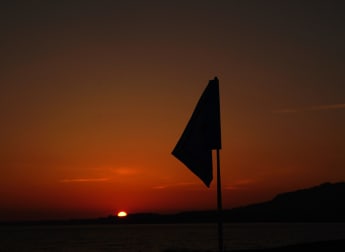Often, due to time constraints and practice demands, golfers do not have much opportunity to see much in a country apart from the course, the courtesy car and the hotel. One player that did not apply to in Madeira last year was Niclas Fasth, and the Swede’s love of the beautiful Portugese territory was enhanced when he ended his trip with a stunning victory in the Madeira Island Open.
Having come from two gruelling weeks of competition in the heat of the desert in Dubai and Qatar, Fasth made the conscious choice of not overdoing the extra-curricular course work in Madeira, instead making time to relax and do a little sightseeing around the enchanting island in the Atlantic Ocean.
The decision to swap the range for recreation proved to be a good one as Fasth, refreshed and relaxed, opened up with a scintillating six under par 66, the second best round of the entire week, to grab a lead he was not to relinquish.
Further cards of 72 and 68 saw him take a two shot lead over Jim Payne into the final round and when the Englishman fell away, Fasth’s 73 was good enough for his maiden European Tour victory, finishing two shots clear of Scotland’s Ross Drummond, England’s Mark Davis and fellow countryman Richard S Johnson.
“Quite a lot of golfers don’t take the time to see the places we visit,” said Fasth. “I accept that we do spend a lot of time practicing as well as actually playing and then maybe working out in the hotel gym or in the physio bus, which does take most of your energy.
“But if you want to go out and about you can if, for example, you have an early tee-time. I had quite an easy week out there, just playing and not doing much practicing, so I had a bit of time to myself which definitely helped.”
Fasth was not a stranger to the winners’ podium, having triumphed three times on the European Challenge Tour in 1993 and again in the Warsaw Golf Open on the European Challenge Tour circuit in 1999. But winning amongst the big boys was extra special.
“I just liked the place from the moment I saw it. When I had some time I went round the nearby mountains which were spectacular. I felt quite comfortable in the area because the sub-tropic terrain there is very beautiful. A lot of places we visit on Tour are beautiful actually, I suppose we just have to take the time to see them.
“I am looking forward to going back to Madeira very much indeed. As I said it is a beautiful place, one of the most beautiful in Europe, and going back as defending champion gives me a really good feeling about it.”
Opened in 1991, the steeply undulating course with its challenging greens is perched 2300 feet above sea level and its beauty is enhanced by many spectacular views over the adjacent Ocean.
The tournament too has quickly established itself as one of the favourites thanks largely to the excellence of the layout, redesigned by Robert Trent Jones on the site where the original nine-hole course had existed since 1937, and the propensity for enthralling golf and exciting finishes.
“The course is not one of the longest we play on Tour but it can be very tricky,” said Fasth. “It is very much up and down, across stretches of water and hollows. There are a lot of spectacular holes along the mountainside stretch, especially on the front nine.”
One of the most spectacular holes on the course is the par three fourth. It might be the most pleasing aesthetically, but it will not be a creature of beauty to players who misjudge the demanding tee shot.
Said Fasth: “It is a fairly long par three with actually nothing to hit but the green and the bunker behind it. If you miss it long you are in the sand and if you miss it short, you’re gone. So that’s why I was particularly pleased with my four threes there last year.
“Anybody would take that any year, definitely. You’re not going to walk off there with four pars easily, you have to work for them. It tends not to be a hole you bogey either, it’s either a par or a double bogey or worse. It’s tough and can really affect your whole round because it’s the toughest hole on the outward nine and comes so near the beginning.”
The previous hole, the par five third, is also a spectacular test of golf. The drive is along the ravine while the second presents a choice – play safe on a similar line or attempt to go for the green right across the ravine.
“The third is another hole where you can’t afford to come up short of the green or you will be in trouble, and long you have the bunker to contend with. You don’t even want to play for the bunker either because it’s a difficult shot from there and not a given birdie,” said the Swede.
“If the pin is back left it’s very risky to go for a back left pin there. There will be a lot of birdies there but a few bogeys as well.”
Fasth had no complaints about the hole last year, birdies in rounds one and two followed by an eagle three in the third round, early gains which laid the foundations for his overall victory.
Obviously a repeat success would be a dream come true for the 28 year old and one, if he could achieve it, would be a sight worth seeing in its own right.







